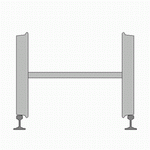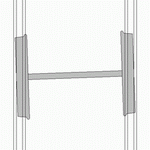Solid ionized material as a lubricant’s agent (iSLA – ionized solid lubrication’ agent) applied directly to the wheel flange of a transit or other vehicle. The iSLA material transfers to the wheel flange, and thence to the gauge face of the rail. A hyper–ionized material is left behind on the gauge face of the rail surface, that provides superior and extremely low friction surface to the wheel–rail interface/contact throughout the rail system. iSLA is applied using a spring loaded bracket/spender assembly that is custom built for each customer. This bracket/spender assembly is attached to the frame of the any kind of vehicle.
Benefits (or why the low surface friction cut costs)
- Cut operating costs of the rail;
- Extend rail gauge and wheel flange life;
- Fuel savings, extend rail gauge & wheel flange life;
- Reduce the risk of derailments;
- Resolves site specific rail wear issues like tight radius curves;
- Reduce lateral forces by up to 80%, rail head loss by up to 70%, & wheel squeal noise.

